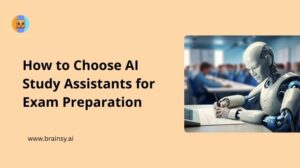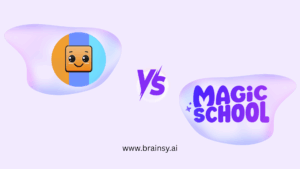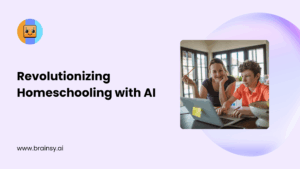The effectiveness of ai detectors in education
The rise of generative AI tools like ChatGPT and others has transformed the landscape of education, prompting concerns about academic integrity.As students increasingly turn to these AI tools for students to assist with their assignments, educators are left grappling with the challenge of distinguishing between human-generated and AI-generated content. This has led to the emergence of AI detection tools, which claim to identify instances of cheating. However, the reliability of these tools to detect AI is under scrutiny, raising questions about their effectiveness and the potential consequences of their use.
Understanding AI Detection Tools
AI detection tools are designed to analyze text and determine whether it was produced by a human or an AI model. These AI content detectors utilize algorithms that assess various linguistic features, patterns, and statistical markers to make their determinations. While the intention behind these tools is to uphold academic integrity, their accuracy is often called into question.
How AI Detectors Work
The underlying technology of AI detection software involves machine learning algorithms trained on vast datasets of both human and AI-generated text. By identifying patterns and characteristics unique to each type of writing, these tools attempt to classify new submissions accordingly. AI content detection processes can vary significantly based on the complexity of the text and the sophistication of the AI model used to generate it.
Claims of Accuracy
Many companies that produce AI detection tools boast high detection accuracy rates. For instance, some claim to achieve accuracy levels exceeding 98%. However, these figures can be misleading. The testing conditions and the types of texts used to validate these claims often do not reflect real-world scenarios. As a result, the actual performance of these tools may fall short of expectations.
The Problem of False Positives
One of the most significant concerns surrounding AI detection tools is the issue of false positives. A false positive occurs when a detector incorrectly identifies human-written content as AI-generated. This can have serious ramifications for students, including academic penalties and damage to their reputations. It’s important to note that false negatives, where AI-generated content is mistakenly identified as human-written, can also occur, further complicating the reliability of these tools.
Consequences of False Accusations
The implications of being falsely accused of cheating can be severe. Students may experience heightened stress and anxiety, which can affect their overall academic performance. Additionally, they may face disciplinary actions that could jeopardize their academic careers, such as failing grades or loss of scholarships.
Statistical Insights
Research indicates that even a small false positive rate can lead to a substantial number of erroneous accusations. For example, if an AI detection tool has a 1% false positive rate and is applied to a large student population, thousands of essays could be incorrectly flagged as AI-generated. This highlights the need for caution when relying on these tools for academic assessments.
Equity Issues in AI Detection
The use of AI detectors raises important equity concerns, particularly regarding marginalized student groups. Studies have shown that non-native English speakers and students from diverse backgrounds are disproportionately affected by false accusations.
Bias Against Non-Native Speakers
AI detection tools often struggle to accurately assess the writing of non-native English speakers. The linguistic patterns and structures used by these students may differ from those of native speakers, leading to a higher likelihood of being flagged as AI-generated. This can create an environment of distrust and discourage participation among these students.
Impact on Marginalized Groups
Research has also indicated that certain demographic groups, including Black students and neurodiverse individuals, face a higher risk of being falsely accused of academic misconduct. This exacerbates existing educational inequities and can have long-term consequences for affected students.
The Limitations of AI Detection Technology
While AI detection tools are marketed as solutions for identifying cheating, their limitations are becoming increasingly apparent. The technology is not foolproof, and reliance on these tools can lead to misguided conclusions.
Evolving AI Models
As AI language models continue to improve, the ability of detection tools to accurately differentiate between human and AI-generated text diminishes. The goal of these models is to produce text that closely resembles human writing, making it increasingly challenging for detectors to identify the source. For instance, the OpenAI classifier, once considered a benchmark in AI detection, has faced challenges in keeping up with rapidly evolving AI writing capabilities.
The Role of Educators
Educators play a crucial role in assessing student work. Relying solely on AI detection tools can undermine their professional judgment and intuition. Teachers are often familiar with their students’ writing styles and can better evaluate the authenticity of their work through direct engagement and communication.
Strategies for Addressing AI Use in Education
Rather than relying on AI detection tools, educators can adopt alternative strategies to address the challenges posed by generative AI in academic settings. These approaches can complement traditional plagiarism detection methods to create a more comprehensive approach to academic integrity.
Promoting AI Literacy
Increasing AI literacy among both educators and students is essential. Understanding how AI tools for student work, their limitations, and their ethical implications can empower individuals to navigate the complexities of AI in education. This knowledge can foster responsible use of AI technologies and encourage critical thinking.
Encouraging Open Dialogue
Creating an open dialogue about AI use in the classroom can help demystify the technology and promote transparency. Educators can engage students in discussions about the ethical considerations surrounding AI and encourage them to share their experiences and perspectives.
The Future of AI in Education
As AI continues to evolve, its role in education will likely expand. Educators must adapt to these changes and find ways to integrate AI responsibly into their teaching practices.
Embracing AI as a Tool
Rather than viewing AI solely as a threat to academic integrity, educators can embrace it as a tool for enhancing learning. By teaching students how to use AI effectively and ethically, educators can prepare them for a future where AI plays a significant role in various fields. This approach may include exploring automated detection methods as part of a broader set of detection strategies.
Fostering a Culture of Integrity
Building a culture of academic integrity requires collaboration between educators and students. By establishing clear guidelines for AI use and promoting ethical practices, institutions can create an environment that values honesty and accountability.
Conclusion
The question of whether AI detectors can effectively catch cheating remains complex. While these AI detection systems offer a potential solution to the challenges posed by generative AI, their limitations and the risks associated with false accusations cannot be overlooked. Educators must prioritize equity, understanding, and responsible AI use in their approaches to academic integrity. By fostering open dialogue, promoting AI literacy, and rethinking assessment practices, institutions can navigate the evolving landscape of education while ensuring fairness and inclusivity for all students. For insights into responsible AI use and tools designed to support both teachers and learners, platforms like Brainsy offer valuable resources.






